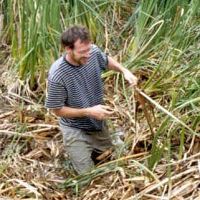Parolari & Goulden, 2017
Attributing Asymmetric Productivity Responses to Internal Ecosystem Dynamics and External Drivers Using Probabilistic Models
Parolari, A.; Goulden, M. (2017)
Fall Meeting, American Geophysical Union, December 2017. Abstract B51K-06.
-
Sierra, INVESTIGATOR
-
Calhoun, INVESTIGATOR
Abstract
A major challenge to interpreting asymmetric changes in ecosystem productivity is the attribution of these changes to external climate forcing or to internal ecophysiological processes that respond to these drivers (e.g., photosynthesis response to drying soil). For example, positive asymmetry in productivity can result from either positive skewness in the distribution of annual rainfall amount or from negative curvature in the productivity response to annual rainfall. To analyze the relative influences of climate and ecosystem dynamics on both positive and negative asymmetry in multi-year ANPP experiments, we use a multi-scale coupled ecosystem water-carbon model to interpret field experimental results that span gradients of rainfall skewness and ANPP response curvature. The model integrates rainfall variability, soil moisture dynamics, and net carbon assimilation from the daily to inter-annual scales. From the underlying physical basis of the model, we compute the joint probability distribution of the minimum and maximum ANPP for an annual ANPP experiment of N years. The distribution is used to estimate the likelihood that either positive or negative asymmetry will be observed in an experiment, given the annual rainfall distribution and the ANPP response curve. We estimate the total asymmetry as the mode of this joint distribution and the relative contribution attributable to rainfall skewness as the mode for a linear ANPP response curve. Applied to data from several long-term ANPP experiments, we find that there is a wide range of observed ANPP asymmetry (positive and negative) and a spectrum of contributions from internal and external factors. We identify the soil water holding capacity relative to the mean rain event depth as a critical ecosystem characteristic that controls the non-linearity of the ANPP response and positive curvature at high rainfall. Further, the seasonal distribution of rainfall is shown to control the presence or absence of negative curvature at low rainfall. Therefore, a combination of rooting depth, soil texture, and climate seasonality contribute to ANPP response curvature and its contribution to overall observed asymmetry.
Citation
Parolari, A.; Goulden, M. (2017): Attributing Asymmetric Productivity Responses to Internal Ecosystem Dynamics and External Drivers Using Probabilistic Models. Fall Meeting, American Geophysical Union, December 2017. Abstract B51K-06..
Explore Further


